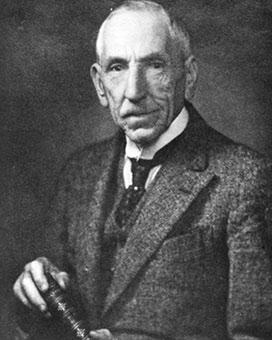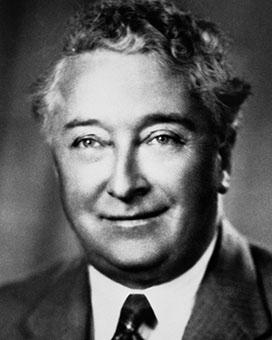About Stanley Bruce

- Born: 15 April 1883
- Died: 25 August 1967
- Partner: Ethel Dunlop Bruce
- Political party:
- Nationalist Party (as PM)
- United Australia Party
- Image: NAA: A1200, L11183B
Australia’s 8th Prime Minister is also the second youngest. He was a decorated war hero before he became Prime Minister in 1923. Stanley Melbourne Bruce was perfectly suited to the elegance and confidence of his period – the ‘Roaring Twenties’.
In office for 6 years, his government sought a voice for Australia in British imperial foreign policy and to manage imperial trade in Australia's interest. His uncompromising stand on industrial relations brought down his government in 1929.
Ethel Bruce was as stylish and dignified a figure as her husband. She fulfilled her official tasks with aplomb, both at home and abroad. As the first tenants of the official prime ministerial residence in the new capital city, the Bruces left their mark on the form and style of The Lodge.
Stanley Bruce became Australia’s longest-serving High Commissioner in London and his work at the League of Nations laid the foundations of enduring international agencies.
The highest of the many official honours he earned was his peerage. From 1947, he was titled Lord Bruce of Melbourne. His chosen coat of arms features 2 Australian lyrebirds and the motto ‘We have been faithful’.
Did you know?
Stanley Bruce:
- was the second youngest prime minister (Chris Watson was the youngest)
- led the first all Australian-born Cabinet
- was one of only 2 prime ministers to lose their seats while in office (John Howard was the other)
- was the only Australian prime minister to become a British Peer
- became the first chancellor of the Australian National University
- shared a passion for golf with his father: John Munro Bruce was co-founder of Australia’s first golf club, the Royal Melbourne Golf Club in 1891, and Stanley Bruce was a founding member of the Royal Canberra Golf Club in 1927
- was nominated by the Australian government for the Nobel Peace Prize in 1936
- is the only prime minister whose remains were laid to rest in Canberra, the national capital







